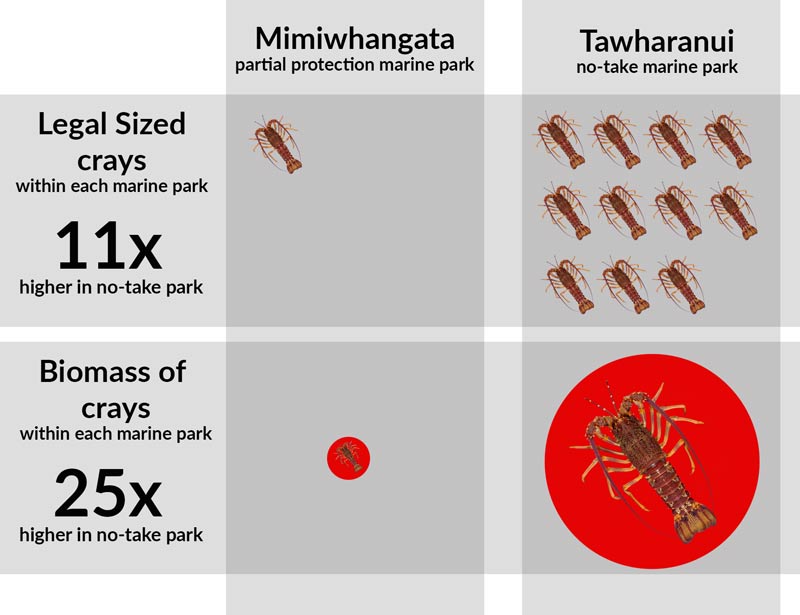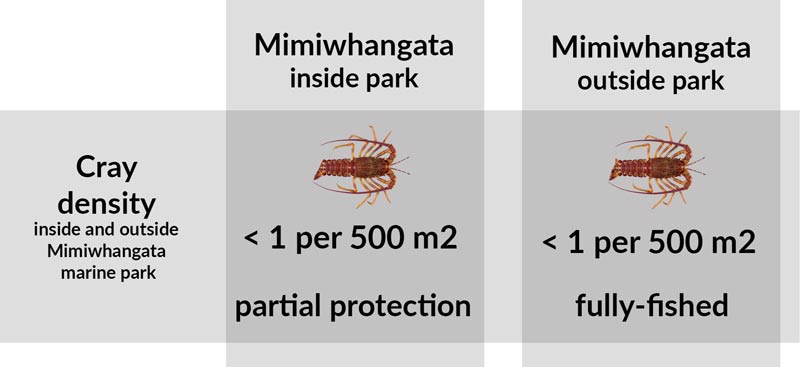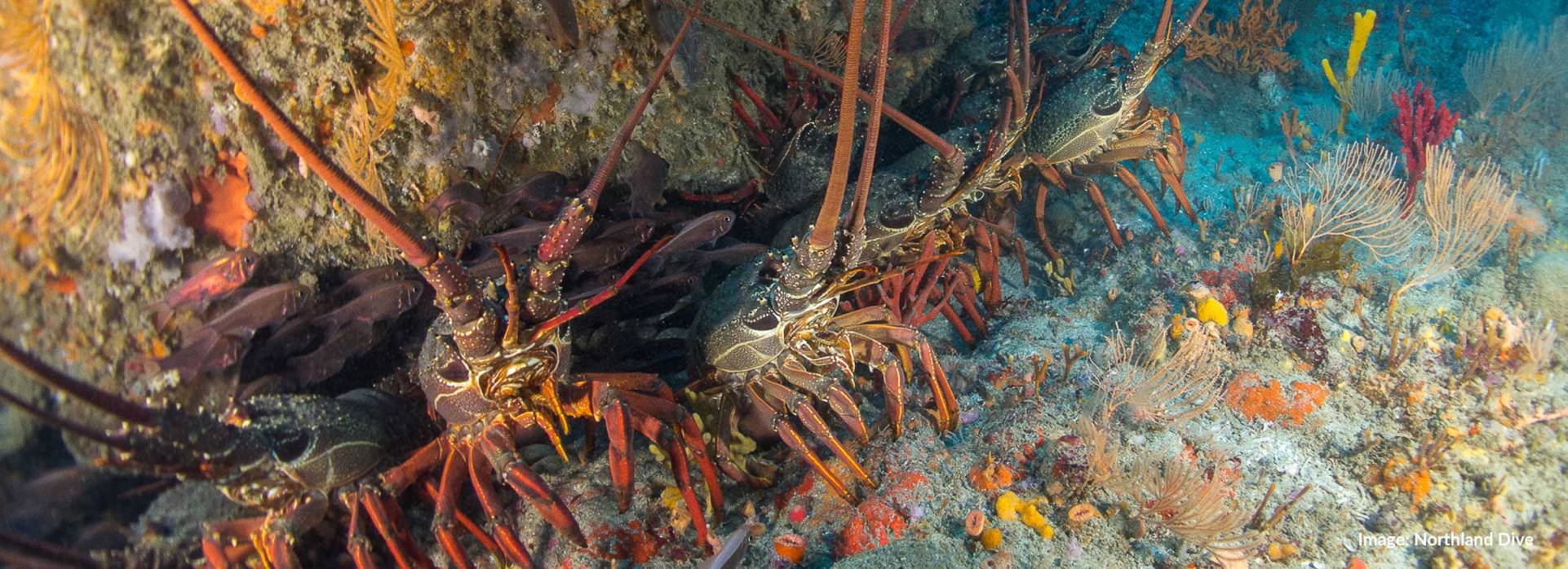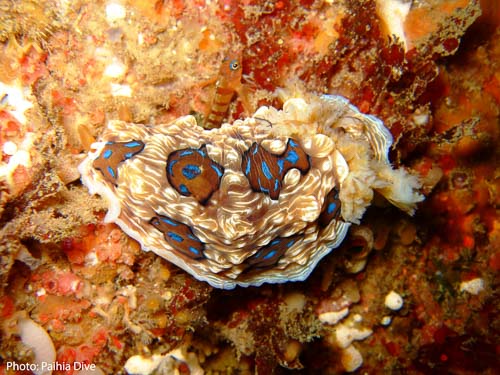Partially protected vs no-take marine parks
"On average, legal-sized lobster were eleven times more abundant and biomass 25 times higher in the no-take area compared to the partial protection area"
"No difference was found in densities of legal-sized lobster between the partially protected marine park and nearby fully-fished sites"
This page summarises the report: Long-term trends in lobster populations in a partially protected vs. no-take Marine Park published in the Biological Conservation Journal in 2006.
Mimiwhangata Marine Park (2000 ha) - partial protection
- Formed in 1984, commercial fishing was phased out gradually, crayfish potting until October 1993.
- Recreational fishing is allowed under special fisheries regulations. These prohibit all nets and long-lines, but allow the use of unweighted, single-hook lines, trolling, spearfishing and hand collecting including taking crays on scuba. Potting for crays is also permitted but restricted to one pot per person, party or boat
Tawharanui Marine Park (350 ha) - full protection
- Completely no-take, was established in July 1981, but not fully implemented until 1983.
The physical habitats within both marine parks are similar and consist of large areas of shallow rocky reef, boulder fields, and soft sandy sediment. The biological habitats on shallow reefs are typical of moderately exposed sites in northeastern New Zealand
Long term data were collected 1977-2005 from before and after establishment of both marine parks.
"An unequivocal example of the recovery of crayfish populations in no-take MPAs, that clearly demonstrates that allowing recreational fishing in MPAs has little benefit to populations of exploited species such as crayfish"
Findings summary
- On average, legal-sized crays were eleven times more abundant and their biomass 25 times higher in the no-take marine park park establishment. Whereas in the partially protected marine park there had been no significant change in crayfish numbers or biomass.
- Furthermore, no difference was found in densities of legal-sized crays between the partially protected marine park and nearby fully-fished sites (<1 per 500 m2)
- The long-term patterns provide an unequivocal example of the recovery of crayfish populations in no-take MPAs, and clearly demonstrate that allowing recreational fishing in MPAs has little benefit to populations of exploited species such as crayfish.
Report authors: Nick T. Shears, Roger V. Grace, Natalie R. Usmara, Vince Kerr Russell C. Babcock





 All of us with an interest and love of Tangaroa, let's work together and take on the challenge of marine protection for the Bay.
All of us with an interest and love of Tangaroa, let's work together and take on the challenge of marine protection for the Bay.